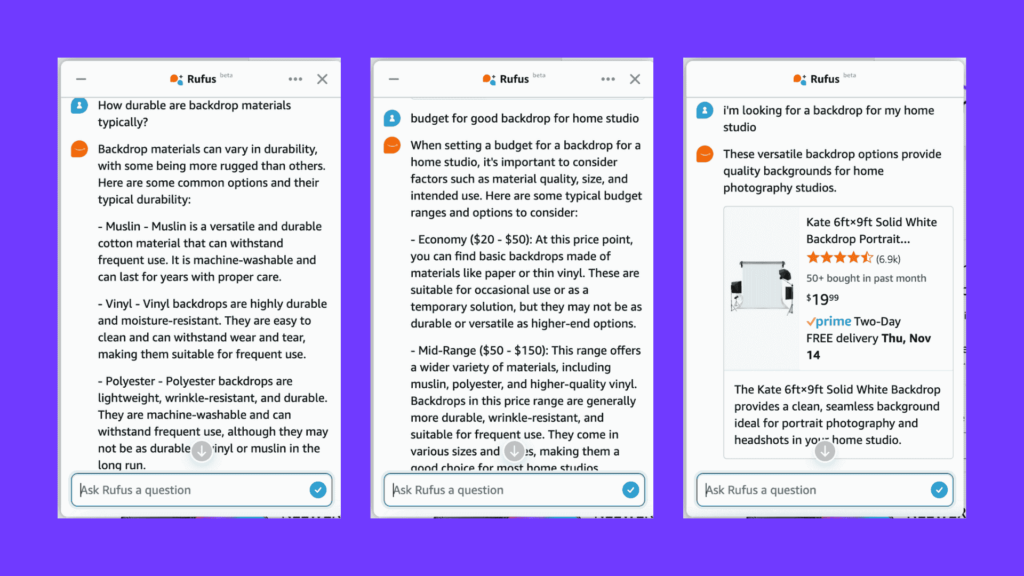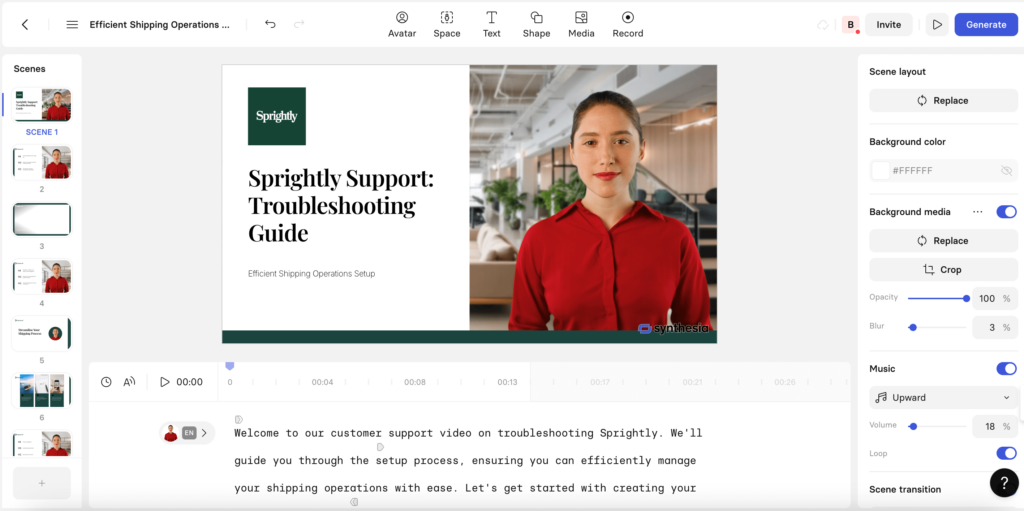The other day, ChatGPT was trending. At this point that’s not a surprise, because of just how much progress has been made, and how Sam and his team keep giving their users something to talk about.
But this time, it was trending for startling reasons: the AI was initiating conversations with its users.
Frankly, that’s something I never thought we’d see.
What’s really interesting is that they weren’t just some random conversation starters. The conversations were actually based on previous chats the users had with the AI.
Of course, OpenAI issued a statement and said it was a technical glitch, which they have now resolved.
But when I heard about it I thought to myself: “Wow…generative AI is advancing really fast. I wonder what strides some of the AI customer service tools have made lately!“
Like ChatGPT, many AI solutions that are useful for support teams change and improve constantly. Staying up to date has become a real challenge. It’s easy for small businesses to miss out on opportunities that could help them provide great service.
So in this post, we’ll bring you up to speed, and discuss how you can leverage generative AI for customer support!
Use Case #1: Email
Email is the backbone of customer support for most online businesses. But let’s be real; nobody wants to receive (or send, for that matter) robotic, templated responses.
That’s where generative AI capabilities come into play. With a little work, AI can craft personalized emails that genuinely resonate with customers.
Today’s AI tools can dig through a customer’s history, get the gist of their problem, and whip up a reply that’s relevant, helpful, and sounds reasonably human.

Now, before you jump in headfirst, let’s talk strategy.
AI is definitely not perfect. Firing off AI-generated emails without a second glance is a recipe for disaster. Quality control is paramount.
It’s true that generative AI can help you come up with personalized responses. But you want to have your customer service team step in for review and tweaking. This way, you get the efficiency of AI and the quality assurance of human oversight.
This approach saves you time and maximizes impact. Your support team can focus on the tricky, nuanced issues that demand a human touch, while AI handles the routine stuff. This keeps your customers happy and your team sane.
Use Case #2: Live Chat
Live chat is the instant gratification king of customer support. And when you combine it with generative AI, things get really interesting.
With live chat, you’ve got service agents on the other end, typing away and trying to solve your problems. From the customer’s perspective it’s great because they get that human touch. The agent can understand their frustration when they’re typing in ALL CAPS, and pick up on details and subtleties.
AI chatbots, on the other hand, are powered by generative AI. They come up with responses on the fly, and learn on the job. With every conversation they have, they’re picking up new tricks.
For instance, Delta Airlines’ “Ask Delta” is an AI-powered chatbot that helps customers check in, track bags, and find flights. It’s so good that their call center volume dropped by 20%.

Amazon also recently introduced Rufus, which answers shopping questions.

But here’s where it gets really interesting. Some smart companies are using both live chat and AI chatbots together.
Typically, the AI support agent jumps in first, handling all the easy stuff like “What are your store hours?” and “How do I reset my password?” But when customer inquiries are more complex, it knows how to bring in the human support team.
This combo ensures that customers get instant responses 24/7. But they also have the option to chat with a real person when they need that extra bit of help. Human and machine – that’s the code for effective use of generative AI in customer support.
Use Case #3: Social Media
When customers reach out to support, they expect fast responses. Keeping up can really take a toll on your team as your business scales. And your customers are only as happy as your service team.
Fortunately, you can use generative AI to connect with customers on their favorite social media platforms. A quick and effective reply there can head off the need for a time-consuming support conversation via email or phone.
When a customer tweets a question about your product outside of business hours, a tool like Kommunicate can swoop in, analyze the tweet, and generate a helpful, on-brand response.

Using generative AI in customer support helps you maintain an active and engaging presence on social media, even when your team is off the clock or busy with other tasks.
Here again, you’ll need to find the right balance between automation and human oversight. You can let generative AI-powered chatbots handle the routine queries, as your team focuses on the more complex and important conversations.
Use Case #4: Agent Training and Development
Generative AI is transforming the way we approach agent training, offering a level of personalization and adaptability that was previously out of reach for many small businesses.
By analyzing an agent’s performance data, AI tools like AmplifAI and CallMiner create tailored training materials that address specific areas of improvement. This shift from one-size-fits-all training to personalized learning paths has the potential to improve both agent performance and customer satisfaction.
However, this technology isn’t without its challenges. There’s a risk of over-reliance on AI-generated content, which could lead to a lack of human insight in the training process. It’s crucial to strike a balance between AI-driven efficiency, and the irreplaceable value of human experience and intuition.
One of the most promising uses of generative AI in customer support training is its ability to provide real-time assistance during interactions. You can have an agent handle a complex issue, while an AI tool like Creovai silently analyzes the conversation and provides relevant information or suggestions.
This reduces the learning curve for new agents, and helps experienced team members handle unfamiliar situations more confidently.
But again, there’s a flip side. Constant AI assistance could hinder an agent’s ability to think critically and solve problems independently. It’s important to use this technology as an aid, rather than a crutch.
The ability of AI to generate realistic customer scenarios for training is another game-changer.

These simulations can expose agents to a wide range of situations, and give them practice responding. This better prepares them for challenging interactions and improves their problem-solving skills.
Just remember: real customer interactions often involve nuances and emotional elements that AI struggles to replicate. A mix of AI-generated scenarios and real-world experience is often the best approach.
Use Case #5: Image and Video Content
So we’ve been talking a lot about chatbots and text-based AI. But there’s a whole new world opening up with generative AI images and videos in customer support.
Suppose a customer is struggling to set up your SaaS product. Normally, you’d send them a wall of text or a static FAQ. But with generative AI tools like Synthesia, you can create a custom video tutorial in minutes.

This significantly reduces production time when compared to traditional methods.
Some SaaS companies are taking this to the next level. ALICE Receptionist, for example, uses AI to generate virtual receptionists that can greet customers, check them in, and even run health screenings.

What about images? Businesses are using AI technologies like Midjourney (my personal favorite) to create product images in various settings, without ever needing to do a photoshoot.
Many people are visually oriented – the right imagery can help your team connect with and support those customers more effectively. They can be used in individual conversations and in your self-service knowledge base.
But here’s the thing: while this tech is cool, AI systems are not perfect. As someone who does a lot of image and video work, I can tell you for a fact that they have flaws. So just like in the other use cases for generative AI, you’ll need to do some tuning and adjustments to get the results you’re looking for.
Get Started with AI-Driven Customer Support Today!
Ironically, generative AI can help you create a more efficient, personalized, and ultimately more human experience for your customers.
As for your support team, they can handle more inquiries, respond faster, and focus on those complex issues that truly need their expertise.
Just remember that generative AI isn’t a magic bullet. You’ll need to experiment to find what works best for your business.
Here at Groove, we’re all about helping small businesses thrive. That’s why we created Helply, an AI-powered support agent designed to streamline your workflows and empower your team.
Helply can handle everything from automated responses and contextual recommendations, to escalation management and sentiment analysis. It even identifies knowledge gaps and continuously learns from every interaction, so your support process gets smarter over time.
Our AI agent is also affordable, easy to use, and seamlessly integrates with your current workflows.
Ready to experience the future of AI customer support? Try Helply today, and take your customer service to the next level!




